
Do you have a question about the Panasonic KX-TGF342 and is the answer not in the manual?
| Brand | Panasonic |
|---|---|
| Model | KX-TGF342 |
| Category | Cordless Telephone |
| Language | English |
Details the base unit and handset components for each model.
Lists the quantities of supplied accessories for different unit configurations.
Provides critical warnings to prevent severe injury and loss of life.
Outlines basic safety precautions to reduce risk of fire, shock, and injury.
Offers advice on base unit placement for optimal coverage and call quality.
Covers environmental considerations, routine care, and product changes.
Lists the technical standards, frequency, power, and operating conditions.
Details the initial setup process for the base unit and charger.
Describes the buttons and functions of the telephone handset.
Explains how soft keys and the navigator key operate.
Describes the buttons and functions of the telephone base unit.
Explains the meaning of icons shown on the handset and base unit displays.
Lists and explains icons displayed on the base unit.
Allows selection of display language between English and Español.
Instructions for setting the date and time on the handset.
Provides steps to record a custom greeting message on the handset.
Instructions for changing dialing mode between Tone and Pulse.
Details how to make calls using the handset, speakerphone, and base unit.
Explains how to answer calls using the handset and base unit.
Covers features like Hold and Mute during an active call.
Explains how to use the Flash function for PBX features.
Describes how to improve sound clarity in noisy areas.
Guides on transferring calls between units or establishing conference calls.
Provides instructions for making intercom calls between units.
Details steps for initiating an intercom call from handset or base unit.
Explains how the handset supplies power to the base unit during a power failure.
Describes how to use the button to block calls and add numbers.
Explains how to store numbers or ranges to block specific calls.
Guides on how to add new names and phone numbers to the phonebook.
Details how to save incoming call information into the phonebook.
Explains how to customize group names and assign ringer tones.
Provides methods to search for and call contacts from the phonebook.
Instructions for modifying existing phonebook entries.
Guides on how to delete single or all phonebook entries.
Explains how to dial stored numbers while on a call.
Details how to assign numbers to speed dial keys.
Explains two methods to access features: scrolling menus or direct command codes.
Covers settings for recording or using pre-recorded greeting messages.
Details settings for alerting users about new messages.
Covers various system settings like ring count and recording time.
Settings to control the answering system's response.
Section for accessing voicemail messages.
Instructions for paging units via intercom.
Details for setting the date, time, and memo alarms.
Settings for automatic or manual time adjustment.
Operation for viewing speed dial entries.
Covers ring adjustments and silent mode settings.
Covers date/time setting, memo alarm, and time adjustment.
Setting to enable or disable talking caller ID.
Covers settings related to key detectors, including registration.
Details settings for blocking specific numbers or ranges of calls.
Code for speed dial operation.
Code for recording greetings.
Settings related to voicemail access and tone detection.
Adjusts the screen contrast.
Allows customization of handset names.
Setting to display or hide handset names.
Controls the auto intercom feature.
Settings for key tone sounds.
Features for editing caller ID numbers automatically.
Controls the auto talk feature for answering calls.
Settings for telephone line modes, flash time, and dial mode.
Controls the call sharing feature.
Instructions for registering new handsets to the base unit.
Details operation and settings related to power failure.
Allows changing the display and voice prompt languages.
Covers settings and operation for the baby monitor feature.
Main menu for key detector settings.
Main menu for phonebook operations.
Main menu for caller list operations.
Main menu for answering device settings.
Covers ring adjustments, silent mode, and call blocking.
Controls the auto intercom feature.
Features for editing caller ID numbers automatically.
Allows changing the display language.
Provides access to customer support information.
Main menu for baby monitor settings.
Details how to set and manage alarms on the handset.
Explains how to activate or deactivate silent mode for handsets.
Instructions for setting the active period for silent mode.
Guides on selecting groups whose calls override silent mode.
Provides instructions for configuring the baby monitor feature.
Explains how to listen in on a room using the internal baby monitor.
Details how to monitor remotely via an external phone call.
Instructions for deactivating the baby monitor feature.
Guides on modifying the phone number for remote monitoring.
Instructions for removing a remote monitoring number.
Adjusts the sensitivity level for the baby monitor feature.
Allows customization of handset names for easier identification.
Enables or disables the display of handset names in standby.
Information on adding new units like extra handsets.
Steps for registering a handset to the base unit.
Instructions for cancelling a handset's registration from the base unit.
Introduction to using Caller ID features and requirements.
Explains how caller information is displayed and logged.
Describes how missed calls are indicated and cleared.
Explains how stored names appear with incoming calls.
Details the feature that announces the caller's name or number.
Explains phonebook name announcement for incoming calls.
Important notes on using the caller list.
Guides on viewing call history and calling back contacts.
Instructions for modifying phone numbers in the caller list.
Explains the automatic editing of caller ID numbers.
Guides on how to delete specific entries from the caller list.
Overview of the answering system's capabilities.
Details the recording capacity and message limits.
Instructions for enabling or disabling the answering system.
Explains how greeting messages are played to callers.
Provides steps to record a custom greeting message.
Describes the use of the unit's built-in pre-recorded greetings.
Guides on reverting to pre-recorded greetings from custom ones.
Instructions for listening to greeting messages.
Details how to listen to recorded messages.
Explains how to call back callers from the message playback.
Instructions for deleting all recorded messages.
Covers operations during message playback like volume and skipping.
Details on calling back callers after listening to messages.
Instructions for editing a caller's number before initiating a callback.
Instructions for clearing all recorded messages.
Covers features for alerting users to new messages.
Details how to listen to messages after a new message alert call.
Explains how to operate the answering system remotely.
Details the 3-digit code for remote operation and security.
Explains the voice guidance prompts during remote operation.
Lists dial keys for direct control of answering system functions.
Allows listening to a caller's message as it's being recorded.
Allows changing the ring count before the unit answers calls.
Notes for users with phone service provider voicemail.
Allows changing the maximum message recording time per caller.
Details the setting to play a greeting but not record messages.
Information about phone service provider's voicemail service.
Instructions for saving the number to access voicemail messages.
Explains the feature that detects voicemail tones.
Instructions for enabling or disabling VM tone detection.
Details on how to listen to voicemail messages.
Provides instructions for mounting the base unit on a wall.
Lists common error messages and their solutions.
Provides solutions for general problems with the unit.
Continues troubleshooting steps for common issues.
Addresses issues related to Caller ID and Talking Caller ID features.
Troubleshooting common problems with the answering system.
Troubleshooting messages related to voicemail.
Provides guidance on handling liquid damage to the unit.
Details FCC compliance, registration, and safety information.
Covers FCC rules, RF exposure, and operating conditions.
Information on compatibility with hearing aids.
Instructions for connecting the base unit and charger.
Details battery installation and charging procedures.
Explains basic operation tips for function keys and navigator.
Instructions for changing display and voice guidance languages.
Steps to set the date and time on the handset.
Guide to recording a custom greeting message.
Covers basic operations like making/answering calls and adjusting volume.
Details phonebook entries, call answering, and basic operations.
Q&A for common issues like noise or registration problems.
Information on accessing customer support and accessories.
Details the limited warranty coverage and service procedures.
Outlines what is covered and not covered by the limited warranty.
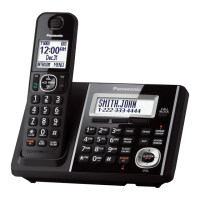

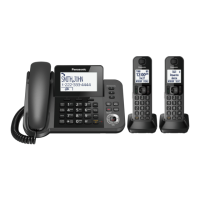
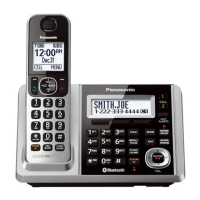


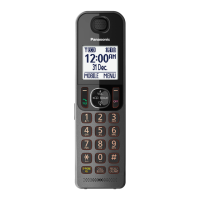
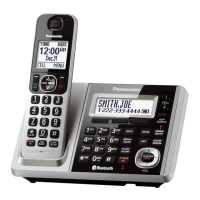
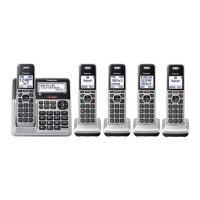
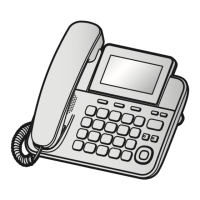
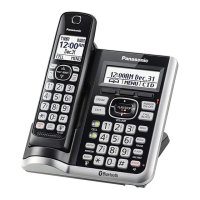
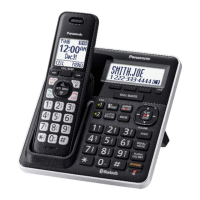
